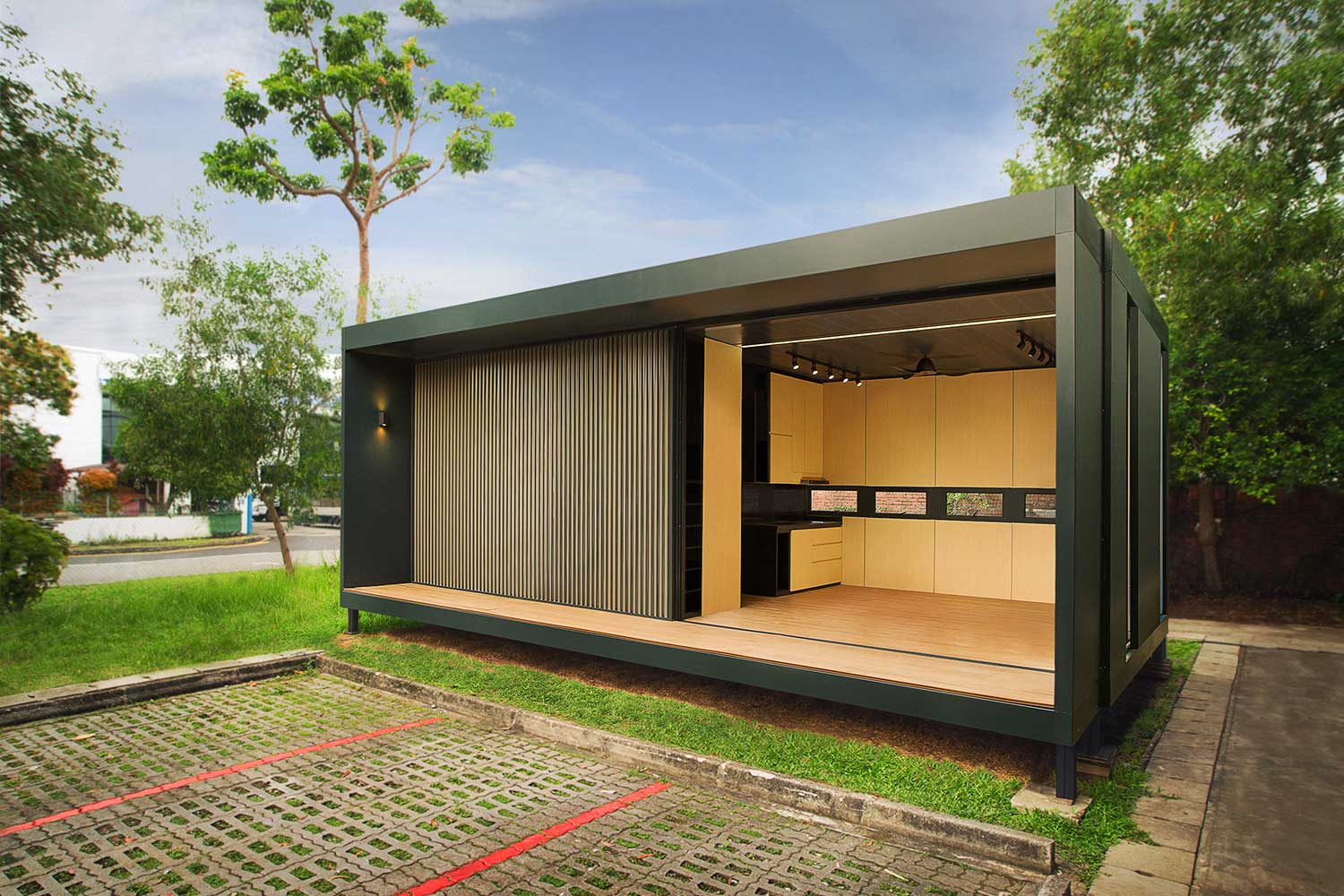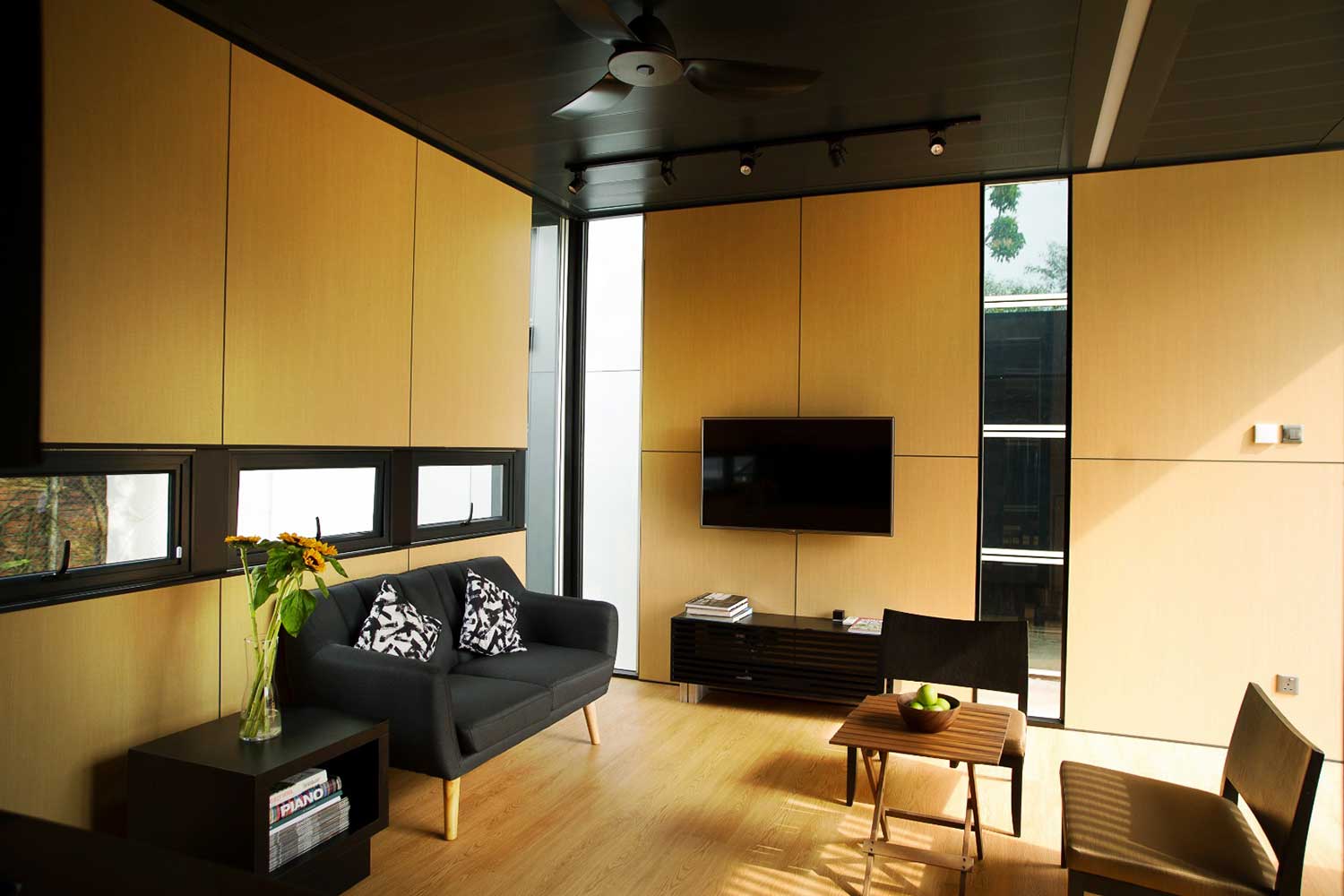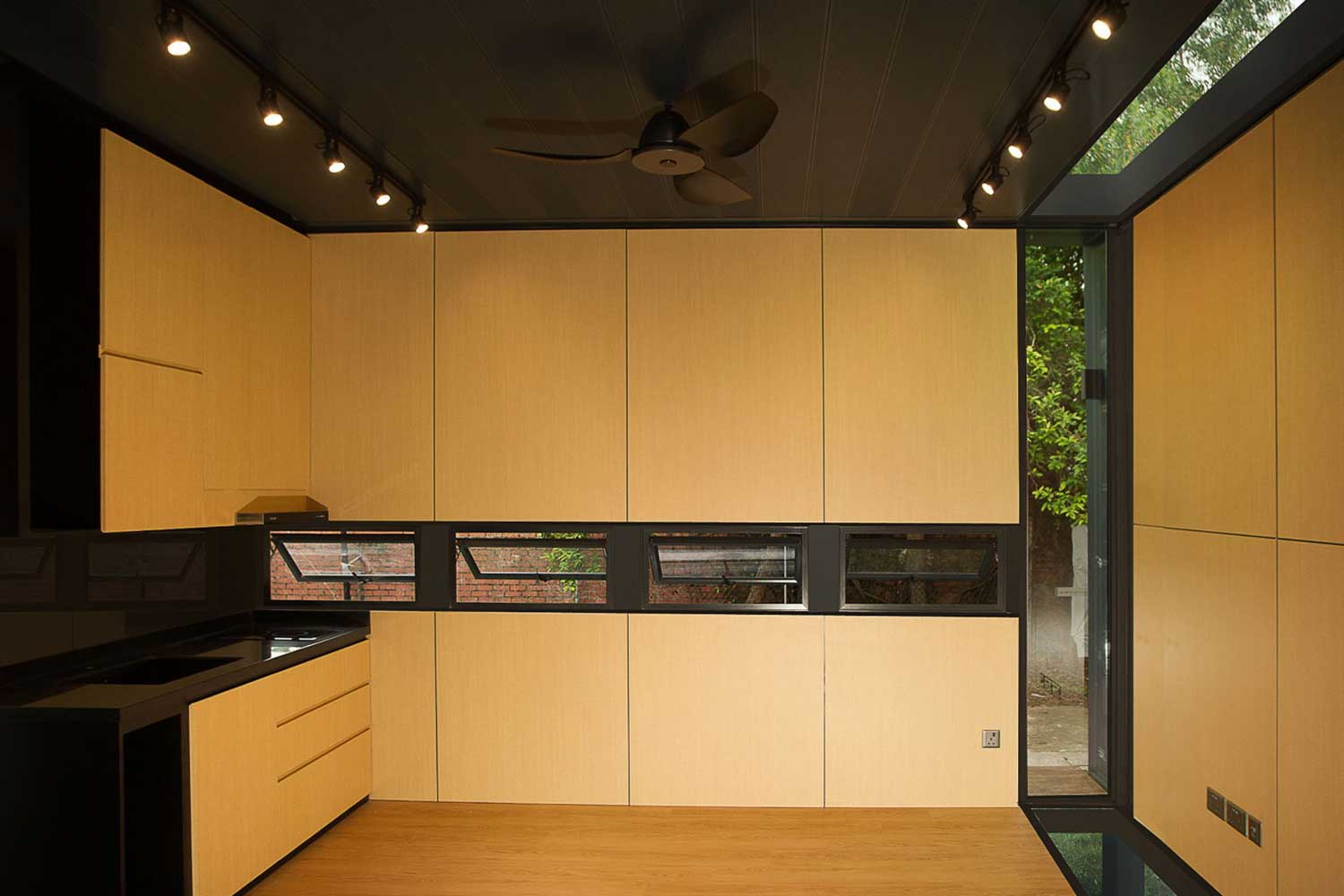MOVIT Homes
POD Structures
Singapore
MOVIT Homes address the global need for sustainable, adaptive and efficient methods of construction. Through a patented innovative modular building system, a new typology of architecture is created and enables live/work/play spaces to be crafted within an extremely short time frame at sites that are ecologically sensitive, are difficult to access, or have limited building resources. Furthermore, the spaces can organically adapt to the users’ needs as they evolve. MOVIT Homes can be dismantled, relocated and repurposed if required, redefining sustainable architecture.
A compact self-contained living space demonstrates the capability of the building technology. Within the 32-square-metre footprint, functions supporting living, working, cooking, dining, sleeping and bathing are efficiently organised. All the building components, such as the structural frame, cladding, interior finishes and fittings are prefabricated and flat-packed for rapid transport and assembly. Sliding glass walls and screens allow for the seamless transition between the interior and exterior, promoting natural light and ventilation, and thus significantly reducing energy consumption. The structure can be assembled in less than one week.
High-strength aluminium is the primary structural material, creating a lightweight and corrosion-resistant pre-engineered building system. The ability of aluminium to be extruded into customised profiles also allows for the easy fixing of building finishes over the primary structure, and for walls to be removed or replaced within hours. Joints were designed to enable the original structure to be extended. The flat-packed and lightweight components can be moved manually and assembled flexibly on site without large construction equipment and machinery. Design for disassembly and reuse means that the building is almost entirely recyclable. By incorporating the Internet of Things, MOVIT Homes monitor energy use, manage home security and learn user patterns to enhance comfort and functionality.
Photography: Noah Samuel Vedanaigam.



